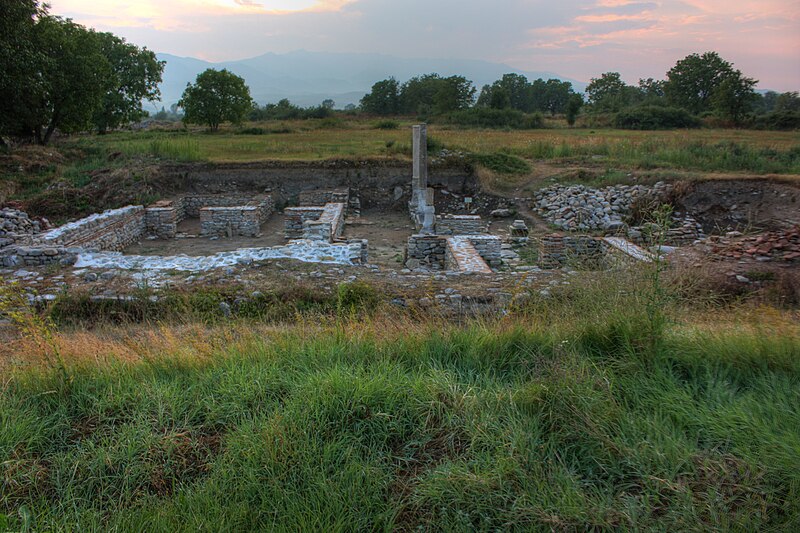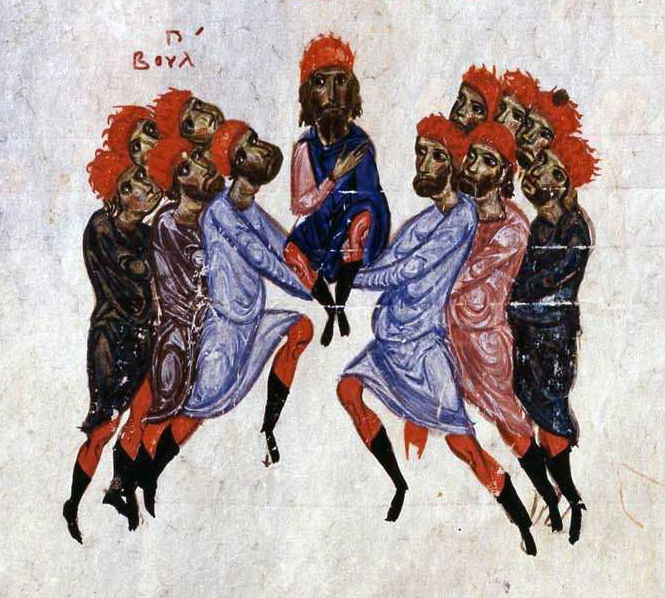Сребрена
Poznat
- Poruka
- 8.140
Градове на Дунаву у среднем веку у Бугарска су Белград, Бдин (Видин), Никополис (Никопол) и Дръстър (Силистра).
Па ја шта причам

Белград (Белен) на путу према Блгарској Загори , Бдин (мали Никополис, на влашкој страни Истера), Никополис (на Истеру) и Селиште (Силистра, некад влашка,некад блгарска).
Готски
Има много топонима "Никопољ"..што е овог тиче , који је делио Дунав и Истер, Србију и Бугарску, са немачке википедије опет:
Постојала су два Никополиса у средњем веку на обалама реке -мали и велики град.Мали "Никополис" је био са влашке стране и звао се Боден ( то је онај Б'дин који се меша са Видином сталном ) , а Велики "Никополис" је имао утврђене бедеме и налазио се на брду јужно од Дунава.
Das kleine Nicopolis war eine Siedlung jenseits der Donau (am nördlichen Ufer) und befand sich somit schon auf wallachischem Boden, dem heutigen Rumänien. Nicopolis maior (am südlichen Ufer) hingegen war eine mächtige Festung mit stabilem Mauerwerk und befestigten Türmen und lag strategisch günstig auf einem Hang, der sich direkt südlich der Donau erhob.
http://de.wikipedia.org/wiki/Nikopol_(Bulgarien)
Овде има интересантних ствари и опет је конфузно који је град "победе" на Истеру (Дунаву), а који Никополис на Иструму (Јантри) :
(Педесет километара је велико растојање)
There were some military camps surrounded by civil settlements by the Danube, but none seemed suitable to become a hub of imperial Roman propaganda, so Trajan decided to create one from scratch. This is how, on an open plain about 50 km south of the Danube, Nikopolis ad Istrum, or the City of the Victory on the Danube, was founded.
http://www.vagabond.bg/index.php?option=com_content&view=article&id=2023&Itemid=31#.UPH7RfKdCZB
Nestled on the bank of the Rositsa River -‒ Nikopolis even had a small harbour as the river was navigable at the time
http://www.vagabond.bg/index.php?option=com_content&view=article&id=2023&Itemid=31&limitstart=1
By the 6th Century, the invasions of Slavs and Avars became too strong for the citizens of Nikopolis ad Istrum to resist. The garrison of the East Roman Empire, or Byzantium as it is more commonly known, was unable to cope. The city walls could not protect the people inside. Nikopolis had been built to celebrate a victory, not to deal with Barbarians in front of its gates. The citizens finally realised that their once glorious home had turned into a trap. So, when the Avars ravaged the city in the end of the 6th Century, the survivors did not bother to return. They moved into the nearby rocky hills above the banks of the Yantra River and built easily defendable fortresses. One of them was to become Tarnovo, the capital of the Second Bulgarian Kingdom.
http://www.vagabond.bg/index.php?option=com_content&view=article&id=2023&Itemid=31&limitstart=2
http://www.vagabond.bg/index.php?option=com_content&view=article&id=2023&Itemid=31#.UPH7RfKdCZB
Nestled on the bank of the Rositsa River -‒ Nikopolis even had a small harbour as the river was navigable at the time
http://www.vagabond.bg/index.php?option=com_content&view=article&id=2023&Itemid=31&limitstart=1
By the 6th Century, the invasions of Slavs and Avars became too strong for the citizens of Nikopolis ad Istrum to resist. The garrison of the East Roman Empire, or Byzantium as it is more commonly known, was unable to cope. The city walls could not protect the people inside. Nikopolis had been built to celebrate a victory, not to deal with Barbarians in front of its gates. The citizens finally realised that their once glorious home had turned into a trap. So, when the Avars ravaged the city in the end of the 6th Century, the survivors did not bother to return. They moved into the nearby rocky hills above the banks of the Yantra River and built easily defendable fortresses. One of them was to become Tarnovo, the capital of the Second Bulgarian Kingdom.
http://www.vagabond.bg/index.php?option=com_content&view=article&id=2023&Itemid=31&limitstart=2
The Dacian/Thracian name was Τάναις/Donaris/Donaris (upper Danube) and Istros (lower Danube)
Katičić, Radoslav. Ancient Languages of the Balkans, Part One. Paris: Mouton, 1976: 144.
http://en.wikipedia.org/wiki/Danube
“The Ister, which is the greatest of all the rivers which we know, flows always with equal volume in summer and winter alike.” The History of Herodotus.
“On the west are the Germans and the river Vistula; on the arctic side, namely the north, it is surrounded by Ocean; on the south by Persis, Albania, Hiberia, Pontus and the farthest channel of the Ister, which is called the Danube all the way from mouth to source.” The Origin and Deeds of the Goths
http://www.wordnik.com/words/Ister
"The largest of the rivers of Europe, the Istros, rises from only a few springs and moves in a direction facing the first assaults of the sun. Later, many Rivers rise with one accord as though they were escorting him--for he is the King of the Rivers of that country--and flow perpetually, and those who live on their banks know each one by name. But as soon as they discharge into the Istros, the name which they had at their birth ceases to be used, they surrender it in his favour, all are called after him, and together pour their waters into the Euxeinos [i.e. the Black Sea]."Aelian, On Animals 14. 23 (trans. Scholfield) (Greek natural history C2nd to 3rd A.D.)
http://www.theoi.com/Potamos/PotamosIstros.html
In Greek mythology, Istros, the King of Rivers, is supposed to be so important that other rivers which escort his flow to Euxeinos (present day Black Sea) have their names only for as long as they flow by him. Once they flow in (as they are tributaries) their birth-name is forgotten for they surrender to Istros.
http://www.schools.indiawaterportal.org/?q=node/31
Ancient Histria or Istros (Ἰστρίη, Danube), was a Greek colony or polis on the Black Sea coast, established by Milesian settlers to trade with the native Getae. It became the first Greek town on the present day Romanian territory.
http://en.wikipedia.org/wiki/Histria_(ancient_city)
Mezia,Istros,Danube
http://www.ebay.com/itm/LANZ-MOESIA...h=item460b2d14b1&ssPageName=RSS:B:SHOP:US:101
http://www.forumancientcoins.com/catalog/roman-and-greek-coins.asp?vpar=963&pos=21&sold=1
Under the Roman Empire (when it was known as Danubius and, in its lower course, as Ister), the Danube was the northern border against the barbarian world.
http://www.reference.com/browse/danube
Poslednja izmena:















 У праву си ти и први пут не противдречиш на овој теми.
У праву си ти и први пут не противдречиш на овој теми.








 ) ali nema azijatski izgled ko Balakov...
) ali nema azijatski izgled ko Balakov...
